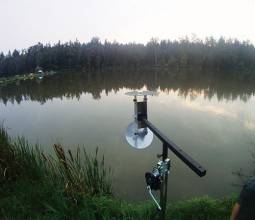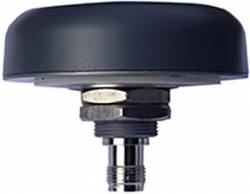NextNav is asking the FCC to add a new spectrum solution in the Lower 900 MHz band (902-928 MHz band) to complement and backup GPS. The modernized Lower 900 MHz band plan creates access to 15 MHz of low-band spectrum for 5G services.
The company filed a rulemaking petition to the FCC, proposing to rearrange the band to facilitate a terrestrial PNT network and broadband, according to a news release. The petition specifically asks the FCC to reconfigure the band plan and adopt new rules, including enabling a high-quality terrestrial complement and backup to GPS for essential PNT services and providing 15 megahertz of low-band spectrum for use by mobile broadband networks.
The proposal, according to the filing, “enables high-quality terrestrial PNT, with the potential for widespread and inexpensive adoption in many use cases because it will use the 5G standard.” And because the company’s NextGen PNT solution uses a small amount of capacity in the 10-megahertz downlink, mobile network providers can use most downlink capacity for broadband, “making the spectrum appealing for integration into existing networks and thereby accelerating the availability of terrestrial PNT services.”
According to the filing: “The 15-megahertz band plan is necessary for this broadband deployment, which enables an at-scale PNT network to be deployed efficiently, providing a unique path to resolving the coverage, cost, and user device issues that have prevented broad terrestrial PNT usage to date.”
NextNav recently signed an agreement to acquire spectrum licenses covering an additional 4 MHz in the lower 900 MHz band from Telesaurus Holdings GB LLC and Skybridge Spectrum Foundation. In March, the Superior Court of the State of California, County of Alameda, issued an Order approving the Receiver’s request to sell all of its Lower 900 MHz spectrum holdings to NextNav, allowing the parties to move forward with obtaining FCC approval.
NextNav expects to partner with mobile network operators or others interested in commercial deployment in the band for 5G and will ensure incumbent operations are protected. The company has used its existing licenses to develop PNT expertise and products, but, because of a legacy band plan and rules that limit the use of the spectrum for 5G, much of this band is underused.
The NextGen PNT technology and network will take advantage of 5G and offers a 3D positioning solution with single digit accuracy. The positioning solution is available indoors as well as outdoors and in urban corridors. It also will provide wireless distribution of precise, resilient timing.
The current Lower 900 MHz Band is “not conducive for either terrestrial PNT or mobile broadband,” according to the filing, with shortcomings that include fragmented geographic-licensing arrangements, outdated command-and-control requirements and other restrictions. Consolidating the geographically licensed spectrum blocks into a 15-megahertz nationwide configuration for both PNT and 5G broadband changes that, allowing the band to support better use cases and serve as a high-performing complement and back up to GPS.
“We have the chance to do something exciting with our airwaves. This new vision for the Lower 900 MHz band unleashes spectrum for essential PNT solutions as well as broadband—all while protecting licensed incumbent operations,” NextNav CEO Mariam Sorond said, according to the release. “In a time when spectrum is scarce, we have a solution to prioritize national security and public safety and free up spectrum for 5G. It’s a win for Americans and the U.S. economy.”






